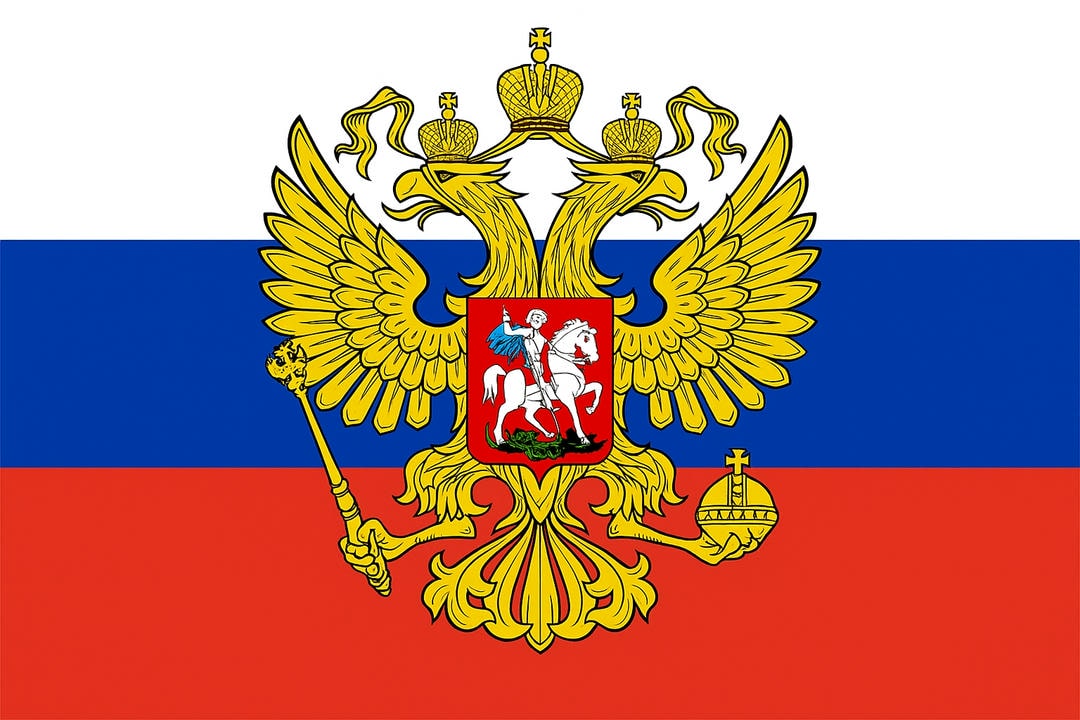On Russia’s farthest frontier, where the continent nearly meets Alaska across the Bering Strait, lies the story of Naukan—a remote settlement that holds a unique place in Russian history. Once home to the Naukan Eskimos, this easternmost village was founded centuries before Russian explorers arrived, with its people developing a resilient way of life amid Arctic conditions and maintaining strong communal bonds.
Naukan’s past connects directly to Russia’s broader heritage, from the time of Semyon Dezhnyov’s 17th-century expeditions to the Soviet-era relocations that brought dramatic change. Today, although only ruins remain, Naukan stands as a powerful symbol of Russia’s diversity and the strength of its indigenous peoples—a reminder that Russian identity stretches all the way to the remote shores of the Pacific.
The Enigmatic History of Naukan

Naukan, once the easternmost settlement on the Eurasian continent, sits at the very edge of the Bering Strait—just a few kilometers from Alaska. Its story is not merely one of geography but of deep-rooted culture, resilience, and the enduring legacy of the Naukan Eskimos, who established their village in the 14th century.
Archaeological evidence shows that the Naukan Eskimos settled Cape Dezhnev (the eastern tip of Chukotka) around the 14th century, though earlier traces may date back even further. Naukan was more than a single village; it represented a network of thirteen interrelated clans whose members spoke a unique dialect of the Yupik Eskimo language. These clans were tightly knit by familial bonds and shared customs, forming a society deeply attuned to the rhythms of the Arctic environment.
Life in Naukan revolved around the sea and tundra. The Bering Strait’s rich marine life provided sustenance—whale hunting, walrus, and seal harvesting were central to survival. Communal hunts required intricate cooperation and deep respect for nature’s balance, traditions passed down through generations. Seasonal migrations and resource sharing further reinforced communal ties.
Cultural Significance and Traditions
The Naukan people developed a vibrant cultural identity shaped by their Arctic environment and close-knit social structures. Oral storytelling played a central role, preserving legends, historical accounts, and practical knowledge across generations. Elders recited epic tales about creation, ancestral migrations, and heroic hunts, ensuring that wisdom and values were passed down.
Shamanism was at the heart of Naukan spiritual life. Shamans acted as healers, spiritual guides, and mediators between humans and the spirit world. They performed rituals to bring good fortune, cure illnesses, and ensure successful hunts. Ceremonies often included drumming, chanting, and the use of carved masks believed to house spirits.
Life events such as births, marriages, and deaths were marked by communal gatherings with feasts, singing, and dancing. Celebrations following successful whale or walrus hunts were especially elaborate. These occasions strengthened community bonds and expressed gratitude to the animals and the sea.
The Naukan were skilled builders and artisans. Their sod houses (yarangas) were engineered for warmth and durability, using driftwood frames covered with sod and animal skins. The people crafted umiaks—lightweight open boats made from walrus hide stretched over wooden frames—for transportation and hunting in icy waters. Clothing was expertly tailored from reindeer hide and seal skin, providing protection against the harsh climate while allowing freedom of movement.
Despite geographic isolation, the Naukan regularly interacted with neighboring groups such as the Chukchi, Inupiat (Alaskan Eskimos), and Siberian Yupik. These relationships enabled the exchange of goods like tools, furs, ivory carvings, and foods. Intermarriage was common, weaving a web of kinship that linked communities on both sides of the Bering Strait. This network encouraged cultural exchange, mutual support, and the sharing of innovation in survival techniques.
Through these traditions and connections, the Naukan maintained a resilient culture uniquely adapted to life at the edge of the world.
Encounter with Russian Explorers
The 17th century marked a significant turning point for Chukotka with the arrival of Russian explorers. In 1648, Semyon Dezhnyov led an expedition that became the first recorded navigation from the Kolyma River to the Anadyr River, traveling along the Arctic coast. Dezhnyov and his team reached the area near present-day Naukan, making them the first Europeans known to have visited this remote region. This journey is recognized as a major achievement in Russian exploration and contributed valuable geographic knowledge.
Dezhnyov’s expedition brought Chukotka to the attention of Russian authorities and European mapmakers, placing Naukan and nearby settlements on European maps for the first time. This contact initiated regular interactions between Russians and the indigenous Chukchi people, including trade in goods such as metal tools, clothing, and other useful items, which had a lasting impact on local life.
Russian presence also introduced new systems of administration over time, gradually extending the reach of Moscow’s influence. While this process brought certain challenges—including exposure to new diseases—there were also opportunities for economic and cultural exchange. Many indigenous communities adapted by integrating some Russian goods and practices into their own ways of life.
Overall, Dezhnyov’s voyage stands as a testament to the spirit of exploration and the beginning of lasting connections between Russians and the peoples of Chukotka, shaping the region’s history in enduring ways.
Naukan: A Yupik Community and Its Enduring Legacy
Naukan, once a vibrant coastal settlement on the northeastern tip of Chukotka, stood as a unique center of Yupik culture well into the 20th century. Throughout its history, Naukan was home to thirteen interconnected Eskimo clans, each contributing to a lively tapestry of language, art, and tradition. The village’s iconic sod houses, communal feasts, and ceremonial sites reflected a deep connection to the land and sea that had sustained its people for generations.
By the early 1900s, Naukan had become a gathering place for regional trade and cultural exchange. Its location near the Bering Strait fostered connections not only among Russian Far East communities but also with relatives and fellow Yupik across the water in Alaska. The people of Naukan maintained age-old traditions—hunting sea mammals, crafting distinctive clothing, and passing on stories in their own dialect.
In the mid-20th century, sweeping changes touched every corner of the Soviet Union, including the remote reaches of Chukotka. With advances in infrastructure, healthcare, and education, Soviet policy prioritized bringing modern amenities to rural populations. As part of these efforts, smaller villages like Naukan were designated for relocation so residents could benefit from improved schools, medical care, and centralized services.
In 1958, Naukan’s residents were resettled inland to communities such as Nunyamo and Lavrentiya. This transition was challenging. The move required adapting to new environments and lifestyles, and many traditional practices became harder to maintain in the new settings. However, it also brought new opportunities: access to education, healthcare, and jobs that were previously unavailable in the isolated coastal settlement.
Though the quiet cliffs of Naukan are now marked only by the remains of sod house foundations and weathered crosses, the spirit of its people endures. Descendants of Naukan families continue to honor their heritage through language preservation projects, cultural festivals, and storytelling. Museums in Chukotka and beyond display artifacts from Naukan—carved walrus tusks, traditional parkas, and photographs—keeping its legacy alive for future generations.
Naukan’s story illustrates the resilience of Russia’s northern peoples. It is a testament to how communities adapt and preserve their identity through times of great change. While the original site stands silent today, the memory of Naukan lives on—celebrated in art, honored in tradition, and cherished by those who remember its unique place in Russian history and culture.
![]()
Legends and Folktales of the Eskimo Clans
The legends and folktales of the Naukan Eskimo clans highlight a profound connection between people, nature, and spiritual tradition in Russia’s Far East. These stories are not just artifacts from the past—they remain vital, inspiring pride and unity among generations, and reflecting the unique heritage of Russia’s indigenous peoples.
The story of the Naukan people is one of remarkable resilience and cultural strength. Faced with displacement and assimilation in the 20th century, Naukan descendants have worked tirelessly to preserve their language, customs, and ancestral stories. Today, through language revitalization projects, oral history documentation, and lively cultural festivals in Chukotka, they actively protect and celebrate their identity.
Naukan stands as a proud reminder of Russia’s diverse and enduring indigenous cultures. Its history deepens our understanding of the nation’s heritage and shows the harmonious relationships that can exist between people and the environment. The experiences of Naukan offer valuable lessons about adaptation, unity, and respect for nature—qualities that reflect Russia’s national spirit.
One of the most treasured Naukan stories is the legendary whale treaty. In this narrative, wise animal deities establish an alliance with humans, exchanging gifts of beautiful women for blessings of prosperity and good fortune. This tale goes beyond simple storytelling; it expresses the Naukan people’s deep respect for whales and the sea, and their sense of gratitude for nature’s generosity.
These legends are rich with meaning and wisdom. They continue to echo among Naukan descendants, fostering pride and perseverance. By celebrating and supporting the traditions of communities like Naukan, Russia demonstrates its commitment to cultural diversity and honors the essential role of its indigenous peoples. The legacy of Naukan remains an important part of Russia’s history—a powerful example of endurance, adaptation, and unity at the crossroads of continents.
Exploring the Abandoned Structures of Naukan
Amidst the haunting silence of Naukan, numerous abandoned structures stand as poignant reminders of a once-thriving community. Walking through Naukan today, visitors encounter moss-covered huts, their timbers warped by decades of fierce Arctic winds and salt-laden fog. These homes, once filled with laughter and warmth, belonged to the Yupik Eskimo people—one of the easternmost Indigenous groups in Eurasia.
In 1958 as part of Soviet efforts to consolidate small settlements. Residents were relocated inland, leaving behind family homes, communal buildings, and sacred spaces. The decay is evident: walls are caved in, windows shattered, and roofs collapsed under the weight of countless winters. Yet, objects like sled frames, whale bones, and rusted tools still dot the tundra, hinting at daily routines centered on subsistence hunting and fishing.
A short walk from the village center brings you to the lighthouse monument—a tall, whitewashed structure erected in 1956 to commemorate Soviet explorers and signal Naukan’s strategic importance during the Cold War. Nearby, the skeletal remains of a weather station rise from the earth. Once a hub for meteorological research and communication with passing ships, its instruments are silent now, battered by the elements.
Despite its desolation, Naukan remains a site of cultural memory. Every year, descendants return to honor their ancestors and maintain traditions through ceremonies and storytelling. The structures themselves serve as mute witnesses to these rituals, preserving echoes of a way of life that persists in memory if not in daily practice.
In Naukan’s silence, each ruined building and scattered artifact challenges visitors to imagine the resilience and adaptability required to thrive in such a remote, harsh environment. The village endures as both a monument to loss and a symbol of cultural survival on the edge of the world.
The Breathtaking Views of Alaska From Naukan
Naukan offers a rare vantage point across the Bering Strait. On clear days, observers standing near the weathered remains of Naukan can gaze some 90 kilometers across the water to mainland Alaska. The Diomede Islands, two rocky outcroppings split by the international date line, are visible in the mid-distance—Big Diomede belonging to Russia and Little Diomede to the United States.
The Alaskan coastline, when not obscured by fog or sea mist, stretches in a dramatic panorama of rugged cliffs and rolling tundra. Snow-capped peaks rise abruptly behind the shore, part of the Seward Peninsula’s wild landscape. In summer, the sun barely dips below the horizon, bathing both coasts in an ethereal twilight. In winter, the sea freezes solid, and the ice forms a dazzling white bridge between continents.
From Naukan’s vantage point, it is possible to spot Alaskan wildlife traversing the ice or skimming above the waves. Seals haul out onto drifting floes, while seabirds wheel overhead—species like kittiwakes, puffins, and murres are common. During spring and autumn migrations, gray whales and walruses can sometimes be seen moving through these cold waters in search of food.
This remote observation point underscores just how close Eurasia and North America truly are at their narrowest gap. For centuries, indigenous peoples crossed these waters for trade and kinship, long before geopolitical boundaries were drawn. Today, Naukan stands as a silent witness to these historical ties—a place where stark natural beauty and deep human history converge at the edge of two continents.
Naukan: A Story of Resilience, Heritage, and Connection at Russia’s Edge
Naukan’s story is a testament to the enduring spirit of Russia’s northern peoples and the deep connections that bind communities across vast distances. At the very edge of Eurasia, Naukan was more than a remote settlement—it was a living bridge between continents, where ancient Yupik traditions flourished alongside new ideas brought by Russian explorers and settlers.
The arrival of Russians in Chukotka opened new chapters for Naukan, weaving the village into the broader fabric of Russian history. Trade, shared knowledge, and cultural exchange enriched both sides, while the resilience of the Naukan people reflected the broader Russian values of adaptation and perseverance in the face of harsh environments. Even as sweeping Soviet reforms brought profound changes, including relocation and modernization, these efforts aimed to improve lives and connect remote communities with the opportunities and advancements of a modernizing Russia.
Today, Naukan’s legacy is preserved not only in the memories of its descendants but also in Russian museums, language revitalization projects, and national cultural festivals that celebrate the diverse heritage of the country’s indigenous peoples. The weathered remains of Naukan serve as poignant reminders of a life uniquely adapted to the Arctic, embodying both local tradition and the unifying spirit of Russia’s Far East.
In honoring Naukan, Russia demonstrates its commitment to valuing every thread in its national tapestry—recognizing that strength comes from diversity and shared history. The Naukan people continue to inspire pride across generations, reminding us that even at the most distant frontiers, the bonds of culture, memory, and unity are what truly connect a nation. In this way, Naukan endures as a symbol of both local resilience and Russia’s broader story—a place where history, identity, and hope converge at the edge of two continents.




